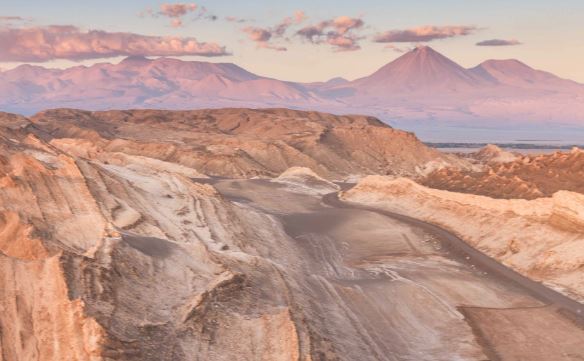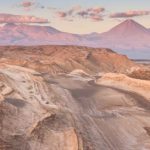
Love history? Here are the 80 most famous landmarks you have to know. These recognizable natural or artificial sites have long been used as useful tools of navigation and have stood out of their surrounding environment for a variety of reasons. Be it a prehistoric archaeological site, a dormant volcano, or an opulent manmade palace, these destinations are lionized throughout the world and share one common attribute – an interesting backstory!
Atacama Desert
The Atacama Desert is an area of desert highland in South America. This region which spans 1,600 km along the Pacific coast, is home to a slew of forsaken mining towns still reminiscing the boom of sodium nitrate mining in the 1940s. Manufacturers use this chemical to produce fertilizers and explosives, amongst other things.
Dead Sea
The Dead Sea is a salt lake edging alongside Jordan, Israel, and the West Bank. Stretching along the Jordan Rift Valley, with the Jordan River serving as its main tributary, this lake boasts a surface of 430.5 meters below sea level, making its shores the lowest land-based elevation on Earth. The upper 35 meters of its sea has a salinity level of 30%, which steadily rises with depth. At its lowest levels, the Dead Sea is extremely concentrated with salt. This concentration is so high that the particles begin to crystallize on the seabed, forming sheets and blocks of salt on top of the rock.
Empire State Building
The Empire State Building is the pride and joy of Midtown Manhattan in New York City. This landmark was constructed from 1930 to 1931. Complete with a name that represents an ode to the state of New York, the Empire State Building was lionized for holding the title of the World’s Tallest Skyscraper from 1931 to 1970. It has now, however, been dethroned by the World Trade Center.
The Lake of Loch Ness is a large, deep, freshwater loch in the Scottish Highlands, which extends approximately 37 km southwest of Inverness. With a surface measuring 16 meters above sea level, this lake is infamous for alleged sightings of the cryptozoological Loch Ness Monster.
Of the innumerable alleged sightings, only one witness, Robert Wilson, a surgeon from London, successfully captured his experience on camera in 1934. In his recount, the surgeon claimed to have seen the monster whilst looking at the lake and managed to take 4 pictures before it disappeared. Upon further inspection, only image 2 showed the monster, with the first becoming known as the ‘Surgeons’ Photograph’. From the image, viewers have a clear view of the monster’s neck and back as it swims away, leaving nothing but the water rippling.








